Hatha Yoga Pradipika – Chapter Two: Shatkarma and Pranayama
Inter-connection of Mind and Prana and their controlling through Pranayama
Chale vate chalam chittam nischale nischalam bhavet /
Yogi sthanutvamapnoti tato vayum nirodhayet//(Chapter -2, Verse 2).
When Prana moves, chitta the mental force too moves. When prana is still, Chitta also still without any movement. By this steadiness of prana the Hatha Yogi reaches stableness and should thus control the Vayu air. (Chapter -2, Verse 2).

What is life and death; the functions of five Vayus
Yavad vayuh sthito dehe tavaj jivanam uchyate /
Maranam tasya nishkrantistato vayum nirodhayet//(Chapter -2, Verse 3).
As long as the vayu (air and prana) remains in the body, that is called life. Death is when it leaves the body. Therefore, retain vayu. (Chapter -2, Verse 3).
Cleansing of the Nadis and Chakras for retention of Prana
Suddhameti yada sarvam nadichakram malakulam /
Tadaiva jayate yogi pranasamghrahane kshamah//(Chapter -2, Verse 5).
When all the nadis and chakras which are full of impurities are cleansed, then the hatha yogi is able to retain prana. (Chapter -2, Verse 5).
Sattvic quality of mind and the three Gunas for pranayama
Pranayamam tatah kuryannityam sattvikaya dhiya /
Yatha sushumnanadistha malah suddhim prayanti cha//(Chapter -2, Verse 6).
Therefore pranayama should, be practice daily with a sattvic quality of mind so that the impurities are removed out of sushumna nadi and cleanliness occurs. (Chapter -2, Verse 6).
Times and duration of practice – Early morning, midday, evening and midnight, holding is step by step held up to eighty counts in one sitting.
Pratarmadhyandine sayamardharatre cha kumbhakan/
Sanairasitiparyantam chaturvaram samabhyaset//(Chapter -2, Verse 11).
Holding should be practiced perfectly four times a day: early morning, midday, evening and midnight, so that holding is step by step held up to eighty counts in one sitting. (Chapter -2, Verse 11).
Signs and symptoms of right Pranayama practice
Kaniyasi bhavedsveda kampo bhavati madhyame /
Uttame sthanamapnoti tato vayum nibandhayet//(Chapter -2, Verse 12).
At first stage there is sweating, in the middle stage trembling, in the last stage complete steadiness, and therefore the breath should be withheld. (Chapter -2, Verse 12).
Diet and Pranayama – Milk and Ghee is recommended.
At the beginning period of pranayama practice, food, consisting of milk and ghee is recommended very much. Upon being established in the practice such conditions are not necessary at all. (Chapter -2, Verse 14).
Shatkarma should done before Pranayama if fat and mucus are Excessive
Medasleshmadhikah purvam shatkarmani samacharet/
Anyastu nacharettani doshanam samabhavatah//. (Chapter -2, Verse 21).
When fat or mucus is too much, shatkarma: the six cleansing practices should be done before pranayama practice. Others, in whom the doshas, i.e. phlegm, wind and bile (vata, pitta, kapha), are balanced should not perform them. (Chapter -2, Verse 21).
Shatkarma – Six cleansing practices
Dhautir bastis tathā netis trātakam naulikam tathā /
Kapālabhātiś chaitāni shatkarmāni prachakshate//(Chapter -2, Verse 22).
Dhauti, basti, neti, trataka, nauli and kapalbhati; these are called as shatkarma or the six cleansing processes. (Chapter -2, Verse 22).



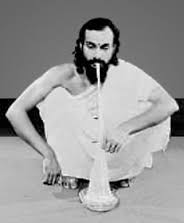

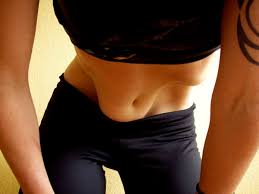

Freedom from the excesses of Doshas through Shatkarma (Chapter -2, Verse 36).
By the six karmas (shatkarma) one is freed from excesses of the doshas. Then pranayama is practiced and success is achieved without strain. (Chapter -2, Verse 36).
Eight Kumbhaka practices – Suryabheda, Ujjayi, Seetkari, Sheetali, Bhastrika,Bhramari, Moorchha and Plavini. (Chapter -2, Verse 44).
Atha kumbhakabhedah Suryabhedanamujjayi sitkari sitali tatha/
Bhastrika bhramari murchcha plavinityashtakumbhakah//(Chapter -2, Verse 44).
The eight kumbhakas are suryabheda, ujjayi, seetkari, sheetali, bhastrika, bhramari, moorchha and plavini. (Chapter -2, Verse 44).
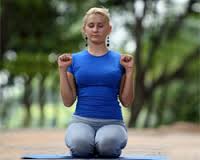
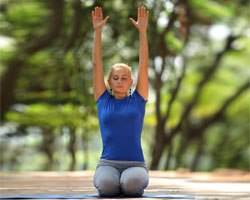


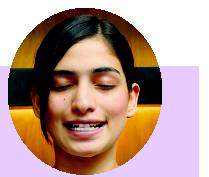

By Maha Bandha, the Prana moves into the Brahma nadi
Purakante tu kartavyo bandho jalandharabhidhah/
Kumbhakante rechakadau kartavyastuddiyanakah//(Chapter -2, Verse 45).
At the end of inhalation, jalandhara bandha should be performed. At the end of kumbhaka and beginning of exhalation, uddiyana bandha should be performed. (Chapter -2, Verse 45).
Adhastatkunchanenasu kanthasangkochane krte/
Madhye paschimatanena syatprano brahmanadighah//(Chapter -2, Verse 46).
By contracting the perineum, contracting the throat and sucking the abdomen up, the prana moves into the brahma nadi. (Chapter -2, Verse 46).
Pranayama three types, rechaka, pooraka, and kumbhaka.
Pranayamas tridha prokto rechapurakakumbhakaih /
Sahitah kevalascheti kumbhako dvividho matah// (Chapter -2, Verse 71).
Pranayama is said to be of three types: exhalation (rechaka), inhalation (pooraka), and retention (kumbhaka). Kumbhaka is again of two types: connected sahita and unconnected kevala. (Chapter -2, Verse 71).
Yavat kevalasiddhih syat sahitam tavad abhyaset/
Rechakam purakam muktva sukham yadvayudharanam//(Chapter -2, Verse 72).
Till attain perfection in kevala kumbhaka, sahita kumbhaka has to be practiced. When you are freed of inhalation/exhalation then the breath/prana is ceased spontaneously. (Chapter -2, Verse 72).
Pranayamoa yam ityuktah sa vai kevalakumbhakah/
Kumbhake kevale siddhe rechapurakavarjite//(Chapter -2, Verse 73).
Perfection of isolated holding is freedom from inhalation and exhalation process. This pranayama spoken of is verily kevala kumbhaka. (Chapter -2, Verse 73).
Na tasya durlabham kimchittrishu lokeshu vidyate/
Saktah kevalakumbhena yatheshtam vayudharanat//(Chapter -2, Verse 74).
Nothing in the three worlds of existence is unobtainable by him who has mastery over kevala kumbhaka and can hold the breath as desired time. (Chapter -2, Verse 74).
